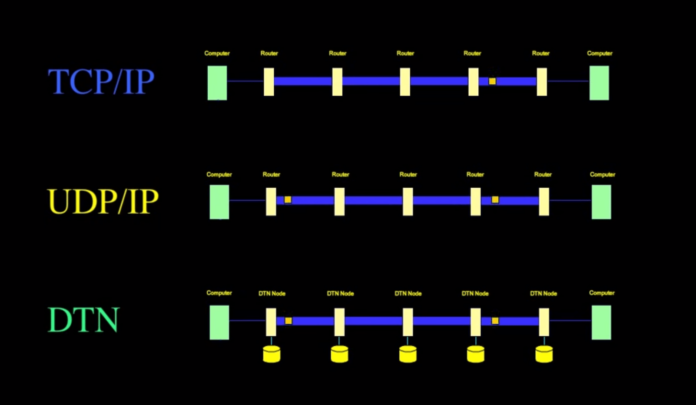With the help of Vint Cerf, Google’s chief internet evangelist, NASA is experimenting with a technology called delay/disruption tolerant networking to allow for remote monitoring and operation of experiments housed on the International Space Station.
NASA has been working on DTN for a number of years. It was described in an early 2015 experiment as “a step toward building a reliable interplanetary internet. … The experiment establishes a long-term communications test bed on the International Space Station, which transmits test messages between the ISS and ground stations. Delay- and disruption-tolerant networks can improve electronic communications by storing data when a connection is interrupted, and forwarding it to its destination using relay stations.”
Cerf, in addition to his role at Google, is considered one of the “fathers of the internet” for co-inventing the transmission control protocol/internet protocol and is a distinguished visiting scientist at NASA’s Jet Propulsion Laboratory in Pasadena, California.
“Our experience with DTN on the space station leads to additional terrestrial applications, especially for mobile communications in which connections may be erratic and discontinuous,” Cerf said. “In some cases, battery power will be an issue and devices may have to postpone communication until battery charge is adequate. These notions are relevant to the emerging ‘internet of things.'”
The latest experiment using DTN involves what’s called the Telescience Resource Kit, which is a software suite designed to “perform common functions needed by most payloads. For example, this includes sending and receiving data, packaging and unpackaging data values, transferring files, managing a DTN node, etc.”
On the ISS, Ethernet cabling enables communications with the ground and onboard experimental payloads. The Telescience Resource Kit lets ground-based scientists access experiments using standard internet protocols and equipment. With the addition of DTN, the connection can endure through a disruption, which “increases the amount of data managers can download, benefiting research and lowering costs.”
Here’s a NASA video introduction to DTN.

NASA and Google scientist test resilient space internet
ABOUT AUTHOR
